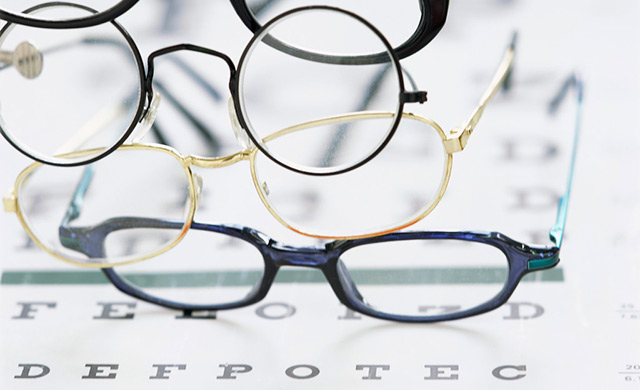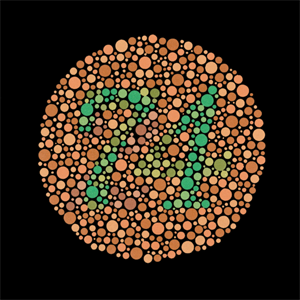Answers for Pilots: Vision
How different vision issues can impact your airman medical certification

Cataracts Intraocular Lenses Glaucoma
Color Vision Defects Contact Lenses Refractive Surgical Operations
Like most aspects of our health, we take our vision for granted until something affects it. Pilots’ eyes, unfortunately, are not immune to the effects of aging. Cataracts and the ensuing surgery, and lens implants are often part of the golden years. And for all of us, even something as simple as getting new contact lenses could have an impact on airman medical certification if the lenses are tinted, bifocal, or multifocal.
The American Academy of Ophthalmology (AAO) compiles data each year on eye diseases, eye injuries, and visual impairment. Here are some of their most recent statistics from 2011:
- Cataract affects nearly 22 million Americans age 40 and older. By age 80, more than half of all Americans have cataract.
- Glaucoma affects almost 2.3 million Americans age 40 and older.
- Red-green color vision defects are the most common form of color vision deficiency. Approximately 8 percent of men and 0.5 percent of women among populations with Northern European ancestry have red-green color defects. The incidence of this condition is lower in almost all other populations studied.
In addition, the AAO shares that more than 150 million Americans wear corrective eyewear, 36 million wear contact lenses, and roughly 800,000 undergo refractive surgical operations, such as LASIK, each year.
Chances are good that many of you reading this are afflicted with one or more of these conditions. So, how does this affect your airman medical certification? Let’s look at some of these one at a time.
Cataracts
After your ophthalmologist or optometrist has released you to resume normal activities, and when you can meet the appropriate visual acuity standards for the class of medical you hold, a Report of Eye Evaluation (FAA Form 8500-7) should be completed by your eye care specialist. Take the completed evaluation to your aviation medical examiner at the time of your next FAA physical examination. Provided there has been a full recovery without complications, and you can meet the visual acuity standards for the class of medical applied for, the medical examiner may issue a medical certificate at the time of examination.
Single Vision Intraocular Lenses
Following implantation of Single Vision Intraocular Lenses, there is no additional recovery time once you meet the FAA vision standards for your class of medical certification and there are no complications. At the time of your next medical renewal, you will need to provide your aviation medical examiner with a completed FAA report of eye evaluation confirming stable visual acuity.
Multifocal or Accommodating Intraocular Lenses
The FAA allows the use of Food and Drug Administration (FDA)-approved multifocal and accommodating intraocular lens (IOL) implants for all classes of medical certification. Your AME may issue your medical certificate to you at the time of your FAA physical examination provided you meet the following requirements:
- Your lens implant must have been done at least three months prior to the FAA physical examination.
- You will need to provide a current FAA report of eye evaluation showing stable visual acuity and refractive error, absence of significant side effects, including glare, flares, or other visual phenomena that could affect visual performance and impact aviation safety. Also, the report should note any medications being used, and side effects, if any.
- You must be able to meet the vision standards for the class of medical certificate applied for.
Glaucoma
Glaucoma is one of the leading causes of vision loss among adults 60 and older. If glaucoma has occurred in one eye, it is likely to develop in the other. Open-Angle (chronic) Glaucoma is the most common type, where the blockage of fluid is gradual, over a period of months or even years. Closed-Angle (acute) Glaucoma is a far less common type of glaucoma, and it is more damaging because of the abruptness with which it occurs.
Regular eye exams every one to two years are the best method of diagnosing glaucoma, as there are often no warning symptoms in the early stages. The comprehensive exam should include measuring pressure in the eye, examination of the optic nerve for damage, testing peripheral vision for blind spots, and examining drainage canals in the eye. Although glaucoma isn't curable or reversible, once diagnosed, it is possible to halt further loss of vision.
Your aviation medical examiner cannot issue a medical certificate when you initially report glaucoma; it will require an FAA decision. You will need to provide your AME with a completed Glaucoma Eye Evaluation Form 8500-14 and Visual Fields testing that includes interpretation.
Color Vision Defects and Removing the Restriction

The medical standards in FAR Part 67 specify that applicants for all classes of medical certification have “the ability to perceive those colors necessary for the safe performance of airman duties.”
If you fail the color plate test at the time of your FAA physical exam, the aviation medical examiner (AME) may issue your medical certificate with the limitation “Not valid for night flying or color signal control.” To have the restriction removed, you may choose to take one of the FAA-approved alternative color plate tests, such as the Dvorine 2nd edition 15-plate test.
These tests take into account the degree of color vision defect and are less sensitive to mild color vision deficiency. If you successfully complete the alternate test, you will be considered as having acceptable color vision for the FAA. You will need to take a color vision test each time you reapply for a medical certificate. Try to take the same test that you previously passed each time you reapply. If you need to seek an outside specialist to take such a test, make sure you obtain a letter from that eye care professional that mentions the type of color vision test and the passing results. Take this to your AME at the time of your FAA exam. The AME may then issue the new certificate without the color vision restriction.
If you cannot pass one of the alternate tests, you have another option that requires taking an operational color vision test with an FAA aviation safety inspector through your local flight standards district office (FSDO). Read more about color vision defects here.
Contact Lenses
- Single vision (distance only): You may resume flying privileges while wearing distance vision contact lenses, when you can meet FAA vision standards for your class of medical certification and have no complications.
- Color-tinted: Color-tinted contact lenses or lenses that significantly reduce transmitted light are not acceptable for aviation purposes.
- Bifocal/Multifocal Contact Lenses: You must have worn the contact lenses for at least one month to allow for adaptation. You will need to provide a current FAA report of eye evaluation showing stable visual acuity and no significant side effects. You must be able to meet the vision standards for the class of medical certificate applied for.
- Monovision Contact Lenses: The FAA currently does not allow the use of monovision contact lenses (wearing one lens to correct for distance and one that corrects for near vision).
Refractive Surgical Operations
 The FAA allows most FDA-approved refractive procedures, including photorefractive keratectomy, LASIK (laser in situ keratomileusis) performed in the traditional manner or by blade-free IntraLase or Allegretto wave lasers; Implantable Collamer Lenses (ICL); and photorefractive keratoplasty performed with Eximer Laser, for all classes of certification.
The FAA allows most FDA-approved refractive procedures, including photorefractive keratectomy, LASIK (laser in situ keratomileusis) performed in the traditional manner or by blade-free IntraLase or Allegretto wave lasers; Implantable Collamer Lenses (ICL); and photorefractive keratoplasty performed with Eximer Laser, for all classes of certification.
Following satisfactory recovery from these refractive procedures, the FAA requests a brief status report from your treating eye care specialist be submitted to the Aerospace Medical Certification Division. The report should indicate that complete healing has occurred without adverse side effects, and that the visual acuity meets or exceeds the minimums for the class of medical privileges you're exercising.
After the procedure, your ophthalmologist (eye surgeon) will refer you back to your own optometrist for follow-up care. The optometrist can then conduct all required testing that will be supplied to the FAA.
- Monocular Correction: Some optometrists now recommend as a convenience to their patients that one eye be corrected for near vision and the other for distance. This results in a monocular vision condition for purposes of FAA medical regulations because near and distant vision requirements cannot be met with each eye, separately. Although monocular contact lenses are not FAA-allowed, this option is acceptable to the FAA, if the following conditions are met:
- A six-month stabilization period is required after having the refractive procedure done, during which time you must wear eyeglasses or contact lenses that allow you to meet the vision standard in each eye separately when you fly. When not flying, remove the corrective lenses so your eyes can adapt to the monovision correction. The stabilization period provides the time necessary to learn other visual cues that will reestablish depth perception, just as if you had lost the useful vision in one eye.
- After the six-month stabilization period, the FAA will then issue a medical certificate with a corrective lens restriction that requires you to continue wearing corrective lenses while flying. To have this restriction removed, you should request the FAA Aerospace Medical Certification Division to issue an authorization for medical flight test with your local flight standards district office (FSDO). Upon successful completion of the medical flight test, the FAA will then issue a Statement of Demonstrated Ability (SODA) that effectively removes the corrective lens requirement.
If you have further questions, give AOPA a call Monday thru Friday, 8 am to 8 pm Eastern, 800-USA-AOPA (872-2672) or read more extensive vision-related information online.



